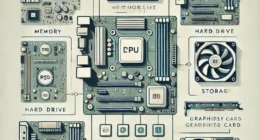Artificial Intelligence (AI) has been around for decades, but it wasn’t until the late 1990s and early 2000s that machine learning (ML) became a dominant focus in the field. Before this period, AI research was largely centered on symbolic reasoning and rule-based systems, where computers followed predefined sets of instructions to perform tasks. However, these methods struggled to handle more complex, real-world problems.
Table of Contents
Technological Advancements
Machine learning emerged as a solution. Rather than relying on explicit instructions, ML allows computers to learn from data and improve their performance over time. The idea of machine learning had been around since the 1950s, but it wasn’t widely used until advancements in computing power, data availability, and algorithm development came together.
Early Developments in Machine Learning
In the 1980s and early 1990s, early versions of neural networks, called “perceptrons,” were explored, but they didn’t perform well on most tasks. In the mid-2000s, breakthroughs in deep learning, a type of machine learning that uses large neural networks, revolutionized the field. Researchers like Geoffrey Hinton, Yann LeCun, and Yoshua Bengio made key contributions that led to significant improvements in computer vision, speech recognition, and natural language processing.
Machine Learning’s Rise in the 2010s
By the 2010s, machine learning, especially deep learning, had become the leading approach in AI research. This shift was driven by its ability to tackle complex tasks with high accuracy. Today, ML powers many applications we use daily, from voice assistants like Siri to recommendation systems on Netflix and YouTube.
Conclusion
Last words of When did Machine Learning Become a Dominant Focus in AI Research?. while AI has a long history, machine learning became a dominant focus starting in the late 1990s and fully took off in the 2010s, thanks to advances in data, computing power, and algorithms.









